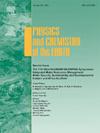Projection of precipitation variability over the highlands of Yemen by statistical down-scaling for the period 2026–2100
IF 4.1
3区 地球科学
Q2 GEOSCIENCES, MULTIDISCIPLINARY
引用次数: 0
Abstract
Climate change significantly affects the management of environmental resources, particularly through changes in the amount and variability of local climate variables, such as precipitation. However, current projections from Global Climate Models (GCMs) are not directly applicable to local-scale impact modeling due to their coarse spatial resolution and inherent biases. To address this challenge, the Statistical Down-Scaling Model (SDSM) is employed to downscale daily precipitation, a crucial input for impact assessment models. This study focuses on the highlands of Yemen, a region highly vulnerable to climate change and precipitation variability. Due to limited and incomplete local climate data, we utilized the best available precipitation datasets, including the Climate Hazards Group Infra-Red Precipitation with Station data (CHIRPS), to fill in missing station data. Historical and future predictors derived from the National Center for Environmental Prediction (NCEP) reanalysis and the Canadian Earth System Model Phase 2 (CanESM2) were used to generate future precipitation scenarios, which were compared with the ensemble means from the Coupled Model Intercomparison Project Phase 5 (CMIP5) and the Coupled Model Intercomparison Project Phase 6 (CMIP6). We also used the Shared Socioeconomic Pathways (SSPs) scenarios, specifically SSP126 and SSP585, to evaluate potential future changes in precipitation. Results indicate a projected increase in seasonal precipitation during the 2030s (2026–2050), 2060s (2051–2075), and 2090s (2076–2100). The western highlands, including Al Mahwit, Rymah, and parts of Sana'a governorate, are expected to experience precipitation increases of up to 55 %. Under RCP2.6, the short rainy season (March–May) is projected to increase up to 14 %, while under RCP8.5, this increase could reach 24 %. The long rainy season (June–August) is expected to increase by 6 % under RCP2.6 and 27 % under RCP8.5. The dry season (December–February) could see increases of 18 % under RCP2.6 and 46 % under RCP8.5, while the autumn season (September–November) may experience a substantial rise of 61 %–101 %. At the annual timescale, precipitation is projected to increase up to 34 % higher than the baseline period (1991–2020) across the region. These projections indicate that the highlands of Yemen will experience wetter conditions in the 21st century. The findings provide valuable insights for developing adaptation strategies for water and environmental resource management, considering the potential future impacts of climate change in the region.

2026-2100年也门高原降水变率的统计降尺度预估
气候变化对环境资源的管理产生重大影响,特别是通过诸如降水等当地气候变量的数量和变率的变化。然而,目前全球气候模式(GCMs)的预估由于其粗糙的空间分辨率和固有的偏差而不能直接适用于局地尺度的影响模拟。为了应对这一挑战,采用统计降尺度模型(SDSM)来降低日降水量,这是影响评估模型的关键输入。本研究的重点是也门高地,这是一个极易受到气候变化和降水变率影响的地区。由于当地气候数据有限且不完整,我们利用现有的最佳降水数据集,包括climate Hazards Group infrared precipitation with Station data (CHIRPS),来填补缺失的站点数据。利用NCEP再分析和加拿大地球系统模式第二阶段(CanESM2)的历史和未来预测因子生成未来降水情景,并与耦合模式比对项目第五阶段(CMIP5)和耦合模式比对项目第六阶段(CMIP6)的集合均值进行了比较。我们还使用了共享社会经济路径(ssp)情景,特别是SSP126和SSP585,来评估未来降水的潜在变化。结果表明,预计2030年代(2026-2050年)、60年代(2051-2075年)和90年代(2076-2100年)季节降水将增加。西部高地,包括Al Mahwit、Rymah和萨那省部分地区,预计降水量将增加55%。在RCP2.6下,短雨季(3 - 5月)预计将增加14%,而在RCP8.5下,这一增幅可能达到24%。在RCP2.6和RCP8.5下,漫长的雨季(6月至8月)预计将分别增长6%和27%。在RCP2.6和RCP8.5下,旱季(12 - 2月)可能会增长18%和46%,而秋季(9 - 11月)可能会大幅增长61% - 101%。在年时间尺度上,预计整个地区的降水将比基线期(1991-2020年)增加34%。这些预测表明,也门高地将在21世纪经历更潮湿的条件。考虑到气候变化对该地区未来的潜在影响,这些发现为制定水和环境资源管理的适应战略提供了有价值的见解。
本文章由计算机程序翻译,如有差异,请以英文原文为准。
求助全文
约1分钟内获得全文
求助全文
来源期刊

Physics and Chemistry of the Earth
地学-地球科学综合
CiteScore
5.40
自引率
2.70%
发文量
176
审稿时长
31.6 weeks
期刊介绍:
Physics and Chemistry of the Earth is an international interdisciplinary journal for the rapid publication of collections of refereed communications in separate thematic issues, either stemming from scientific meetings, or, especially compiled for the occasion. There is no restriction on the length of articles published in the journal. Physics and Chemistry of the Earth incorporates the separate Parts A, B and C which existed until the end of 2001.
Please note: the Editors are unable to consider submissions that are not invited or linked to a thematic issue. Please do not submit unsolicited papers.
The journal covers the following subject areas:
-Solid Earth and Geodesy:
(geology, geochemistry, tectonophysics, seismology, volcanology, palaeomagnetism and rock magnetism, electromagnetism and potential fields, marine and environmental geosciences as well as geodesy).
-Hydrology, Oceans and Atmosphere:
(hydrology and water resources research, engineering and management, oceanography and oceanic chemistry, shelf, sea, lake and river sciences, meteorology and atmospheric sciences incl. chemistry as well as climatology and glaciology).
-Solar-Terrestrial and Planetary Science:
(solar, heliospheric and solar-planetary sciences, geology, geophysics and atmospheric sciences of planets, satellites and small bodies as well as cosmochemistry and exobiology).
 求助内容:
求助内容: 应助结果提醒方式:
应助结果提醒方式:


